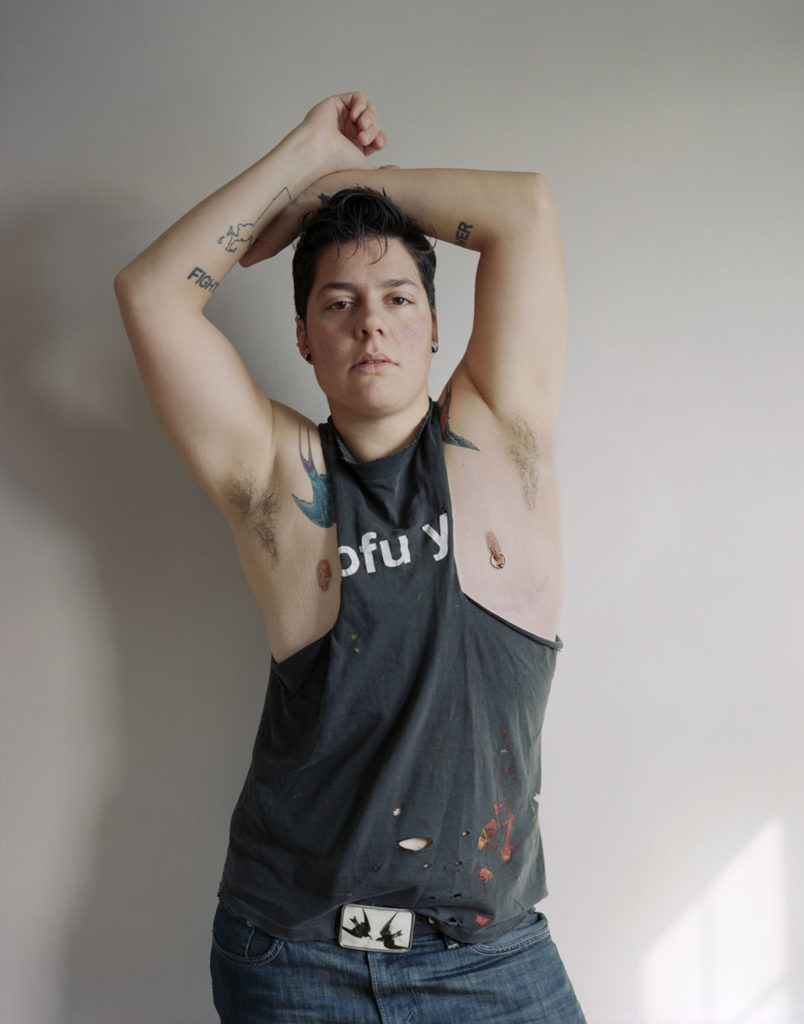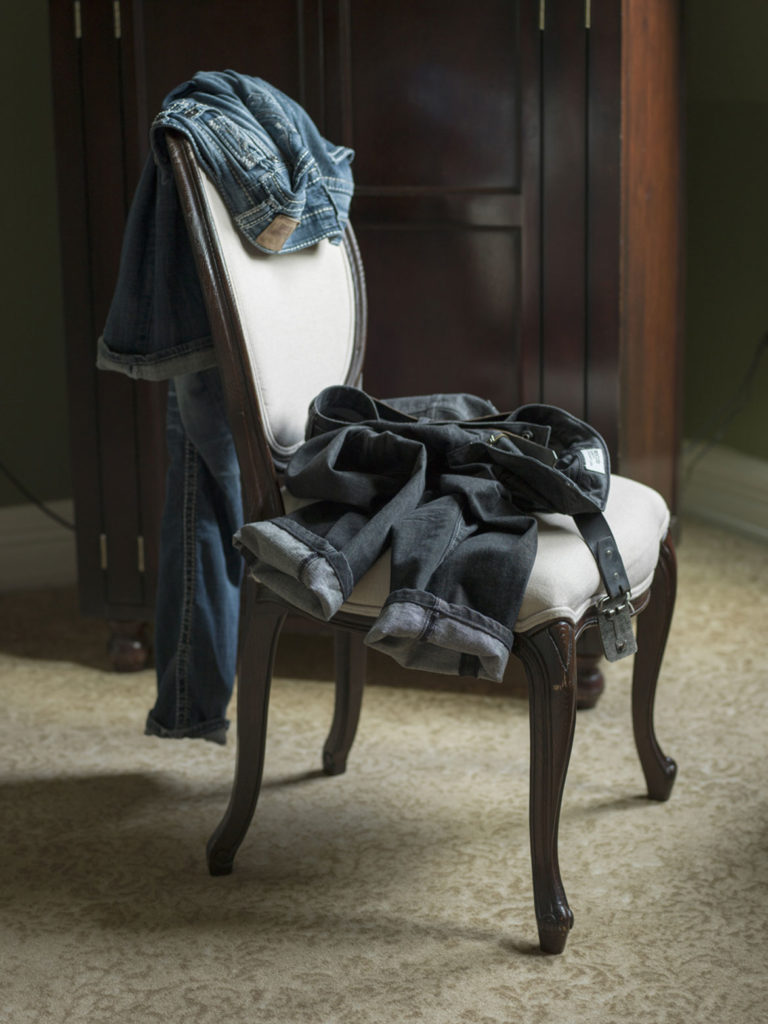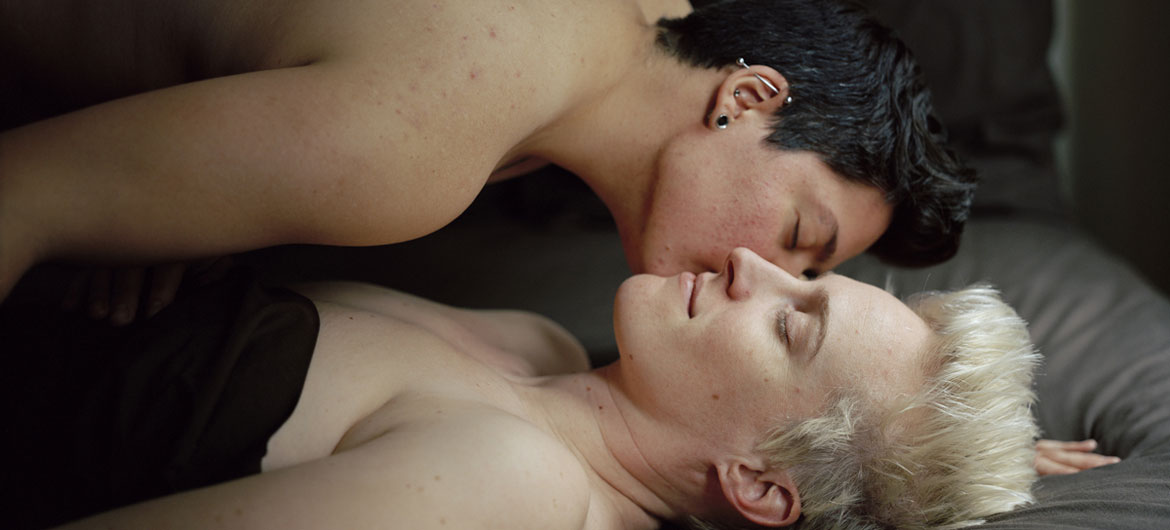Jess T. Dugan says the photos in her series “Every Breath We Drew”—on view at Montserrat College of Art in Beverly, Massachusetts, from Jan. 14 to March 16—add up to “a long-term portrait project that looks at identity, sexuality and gender. It’s very subjective.” It’s rooted in her personal experience, travels, people she meets. “It’s about a larger way of being in the world, or a larger sense of identity.” (Dugan speaks at Montserrat on Jan. 31 at 11:20 and 6 p.m. before a 7 p.m. reception.)
Dugan is best known for “To Survive on This Shore,” a series of photographs and interviews with transgender and gender nonconforming older adults that Dugan did in collaboration with Vanessa Fabbre, Dugan’s professional and romantic partner.
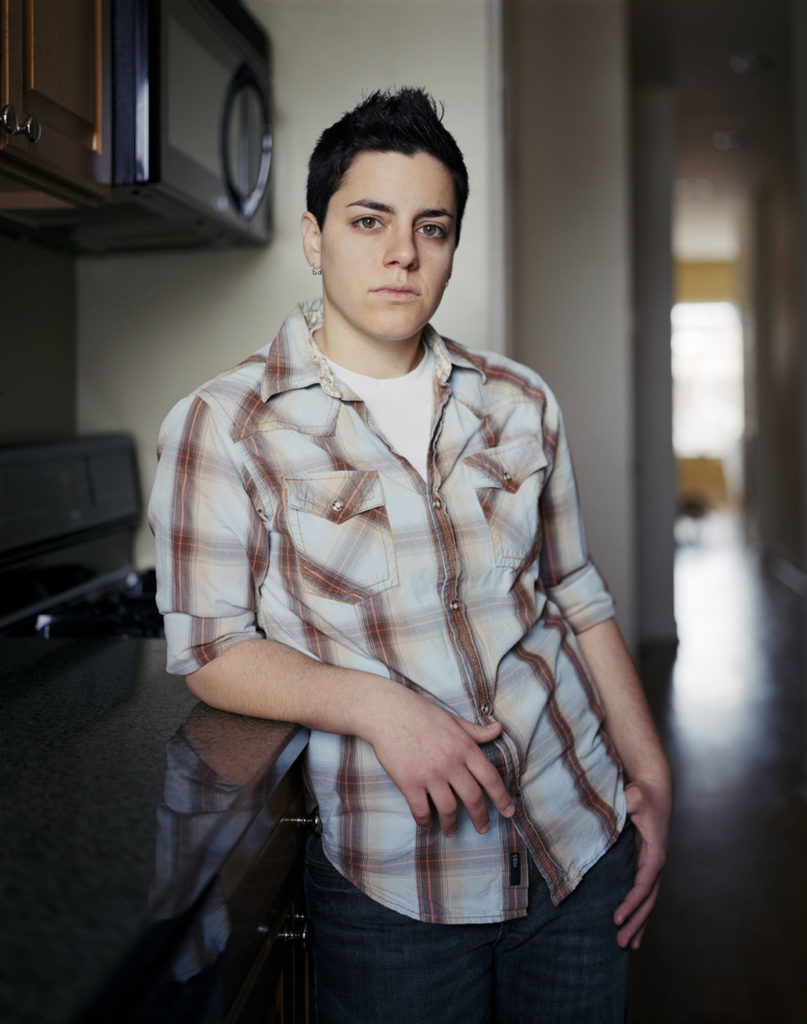
The “Every Breath We Drew” exhibition features 15 photos—solo portraits, some couples, still-lives. Dugan photographs Betsy standing leaning against a counter in a kitchen, Connor standing topless with a pregnant belly, Hunter and Jeffry seated in a living room, Jamie bathing in a tub and coming out of a pool. “The identities range pretty broadly,” Dugan says, not all the people are queer or trans.
One photo shows Dugan, arms raised, staring into the camera. Another photo shows Dugan’s back reflected in a mirror. “I’m interested in the viewers knowing who I am and what I look like behind the camera,” Dugan says.

Other images portray two pillows stacked on a bed, two pairs of jeans thrown over a chair, two pairs of black boots standing next to a bed. These pairs of objects are intended as visual metaphors about the desire for relationship. “These are the boots my partner and I were wearing when we met.”
A 2013 photo shows Fabbre laying on her back on a bed smiling as Dugan leans in to kiss her. Dugan says, “I took that shortly after we met. I have always included myself in my work. That was actually the beginning of me photographing Vanessa.”
“My identity is an important part of my work,” Dugan says. “…I identify as someone who is queer and gender nonconforming. I am female, but my presentation is more masculine. I had chest surgery, but I’m not transitioning to male. … I’m very at home in my body and my life, but still socially that can be a challenge.”
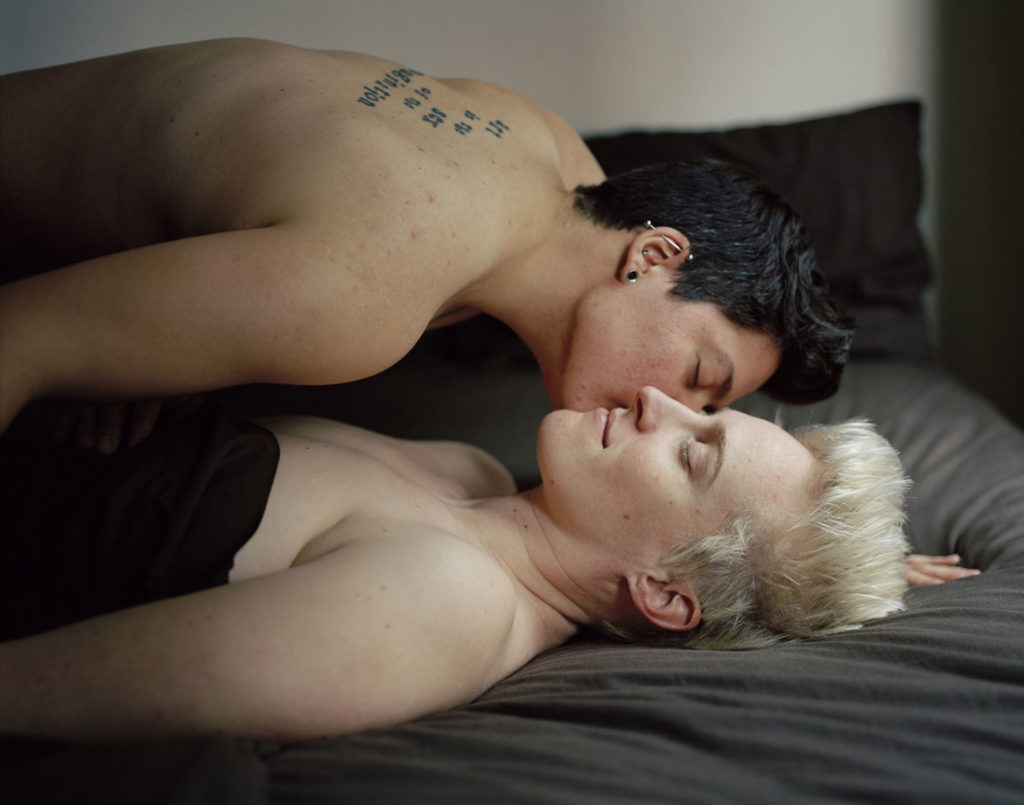
Dugan says, “I’ve essentially always looked this way. I grew up with a heightened awareness around identity because my gender wasn’t what people expected. … The thing that felt at home to me wasn’t acceptable to other people.”
Dugan was born in Biloxi, Mississippi, and grew up in Little Rock, Arkansas. Dugan came out as gay while in high school in Cambridge, Massachusetts, where Dugan moved at age 13. She “found a lot of validation in photography,” Dugan says. “I believe representation is very powerful.”
Dugan studied photography at Massachusetts College of Art and Design in Boston then museum studies at Harvard University. She started photographing “Every Breath We Drew” in 2011 when she left Boston for graduate studies at Columbia College in Chicago. The following year there, she met Fabbre and they began a romance. In 2014, they moved to St. Louis, where Fabbre found work as an assistant professor at Washington University.

“My interest in gender and masculinity comes from my own process of defining gender for myself,” Dugan says. “…In some ways, I think of this project as an extended self-portrait—who I’m interested in, the kind of moment we create together, the way they look at me, the way I look at them.”
“I’m almost always [photographing] in people’s private spaces,” Dugan says. “It allows for a more personal interaction. They’re more comfortable. Intimacy. Closeness.”
“I work slowly when I’m creating portraits. … I try to slow down the moment,” Dugan says. She used a bulky 4×5 view camera for a decade until switching, in 2013, to a medium-format digital camera. Some of the more recent photos were photographed outside and late in the day, with intense lighting. Dugan wants the people looking directly into the camera with a pose, a gesture that speaks to their personalities. “It’s important to me in this work that people are in this moment with the subject.”

Dugan seeks to photograph “people who can remain open and vulnerable and gentle.” People who “reject pieces of social expectation that don’t work for them. I’m more interested in people who expand definitions.”
“I am really interested in people who have chosen to fully live as their authentic selves rather than rejecting that or minimizing that to fit into society,” Dugan says. “There are so many ways our culture pressures us to conform in some way. I’m interested in the kind of freedom that comes when you don’t do that. But loss also comes. … I’m interested when people have chosen to push through and get to the liberating side, even when it’s challenging.”
If this is the kind of coverage of arts, cultures and activisms you appreciate, please support Wonderland by contributing to Wonderland on Patreon. And sign up for our free, weekly newsletter so that you don’t miss any of our reporting.
